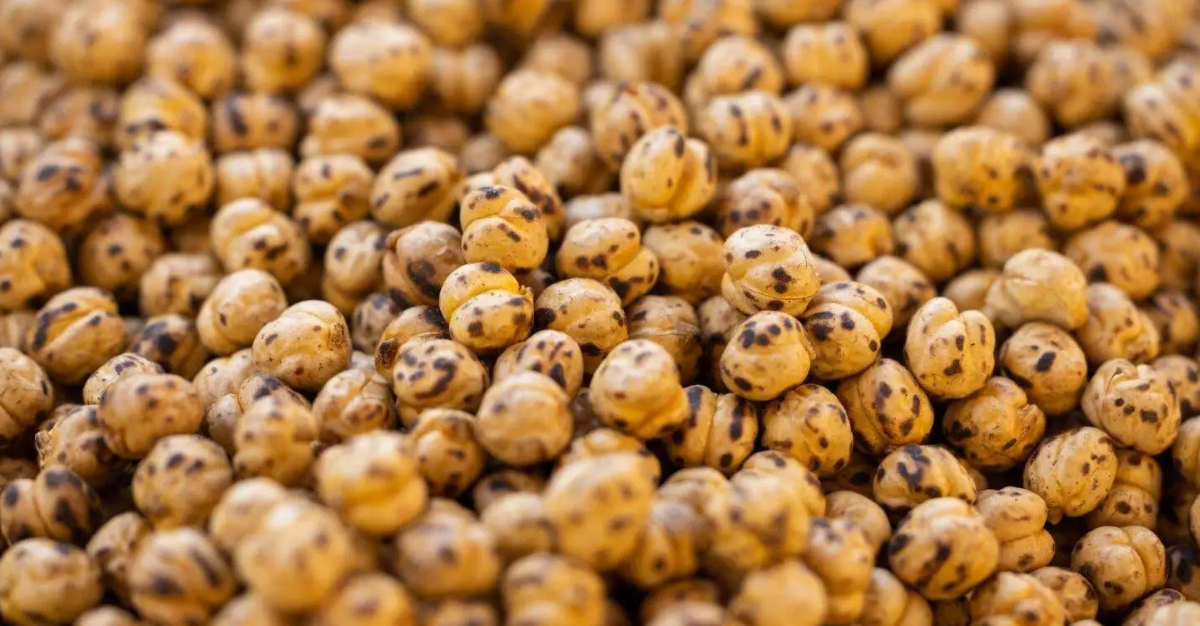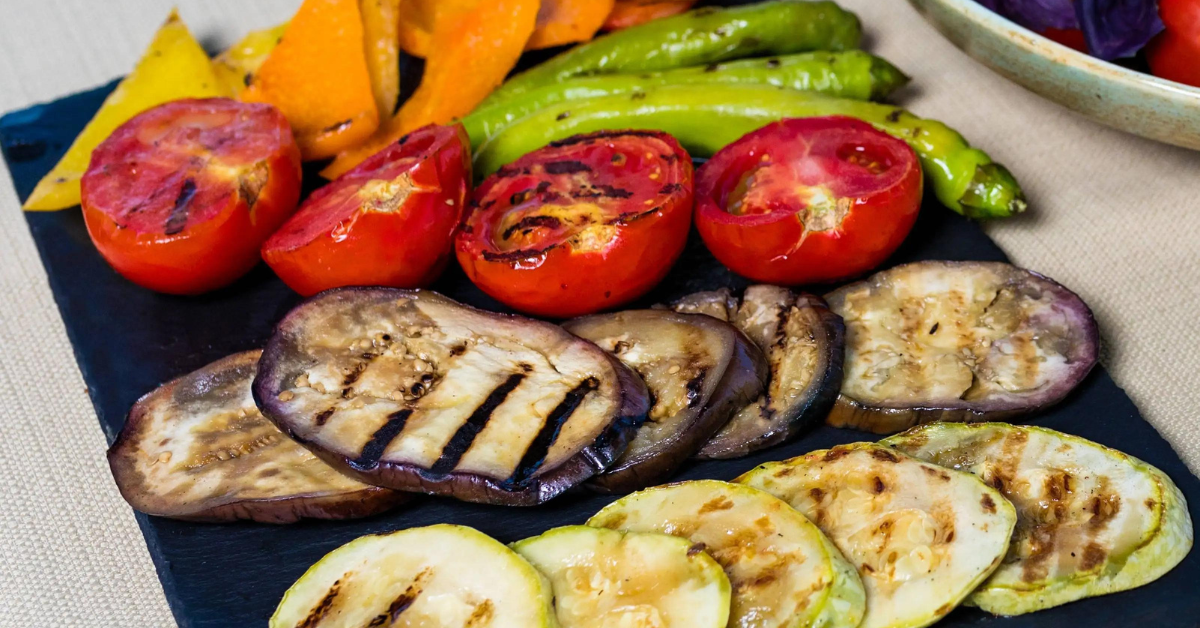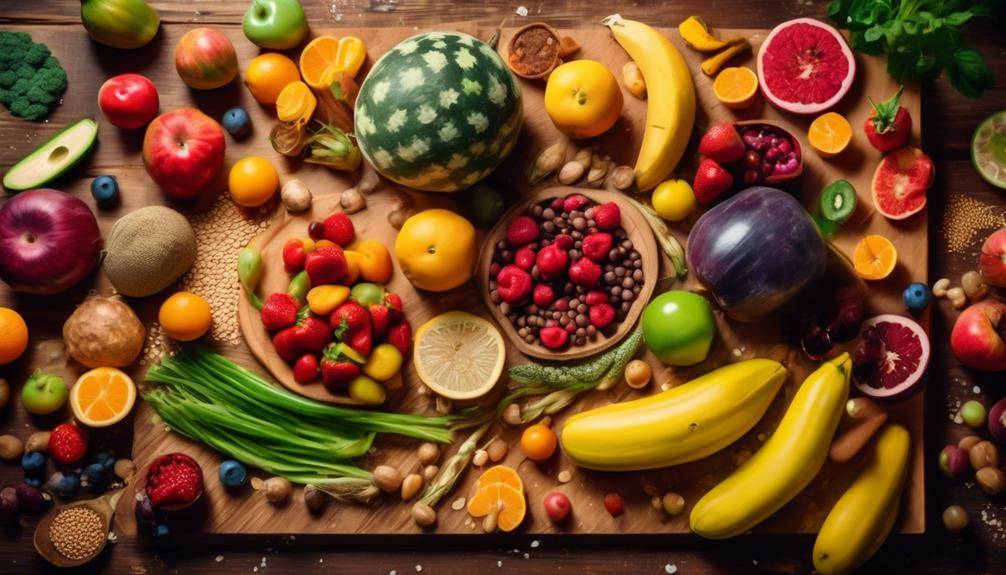The Best Essential Slow Cooking Techniques For Holidays

Slow Cooking Techniques For Holidays; ‘Tis the season to slow-cook your way to holiday perfection! As the frosty air descends upon us, embrace the warmth and tantalizing aromas that fill your kitchen. But before you embark on your slow cooking journey, allow us to unveil three essential techniques that will elevate your holiday feasts to new heights. These techniques, like secret ingredients in a cherished family recipe, will unlock a world of flavors and textures that will leave your guests craving for more. So, gather ’round and let us unveil the secrets that will make your holiday meals truly unforgettable.
Slow Cooking Vs. Traditional Cooking
When comparing slow cooking to traditional cooking, you’ll find that the former offers a more hands-off approach and results in tender, flavorful dishes. Slow cooking is a method that involves cooking food at low temperatures for an extended period of time. This allows the flavors to develop slowly and evenly, resulting in a rich and delicious meal.
One of the benefits of slow cooking is that it preserves the natural flavors of the ingredients. Unlike traditional cooking techniques, such as frying or grilling, slow cooking allows the flavors to meld together over time. This results in dishes that are more complex and nuanced in taste.
Another advantage of slow cooking is that it tenderizes tough cuts of meat. Traditional cooking techniques often require marinating or pounding the meat to make it tender. However, with slow cooking, the low heat and long cooking time break down the collagen in the meat, resulting in tender and juicy meat that falls off the bone.
Additionally, slow cooking is a convenient method for preparing meals. Once you have prepared the ingredients and set the slow cooker, you can leave it unattended for hours. This frees up your time to focus on other tasks or simply relax. It’s perfect for busy individuals or those who want to enjoy a home-cooked meal without spending too much time in the kitchen.
Choosing the Right Cut of Meat
To ensure a tender and flavorful slow-cooked meal, selecting the right cut of meat is essential. The flavor profiles and meat tenderness differ among various cuts, so understanding these differences will help you make the best choice for your dish.
When it comes to flavor profiles, certain cuts of meat are known for their rich and robust flavors, while others have a milder taste. For example, cuts like chuck roast and short ribs are known for their intense beefy flavors, making them ideal for hearty stews and braised dishes. On the other hand, cuts like pork loin and chicken breast have a milder flavor that can easily absorb the flavors of your seasonings and sauces, making them versatile options for a variety of dishes.
Meat tenderness is another crucial factor to consider when choosing the right cut. Tougher cuts like brisket and pork shoulder are perfect for slow cooking because the long cooking time breaks down their connective tissues, resulting in tender, melt-in-your-mouth meat. These cuts are excellent choices for dishes like pulled pork or beef stew. Conversely, tender cuts like filet mignon and chicken tenderloin require less cooking time and are better suited for quick cooking methods like grilling or pan-searing.
Mastering the Art of Flavor Infusion
Now it’s time to take your slow cooking skills to the next level by mastering the art of flavor infusion. To enhance the taste of your dishes, consider some flavor pairing tips that can elevate your cooking. Additionally, don’t forget the power of marinating your meat before slow cooking to infuse it with even more delicious flavors.
Flavor Pairing Tips
Enhance the flavors of your slow-cooked dishes by mastering the art of flavor infusion with these expert tips.
- Experiment with contrasting flavors: Pairing sweet and spicy, tangy and creamy, or savory and sour can create unique flavor profiles that tantalize your taste buds.
- Don’t forget about herbs and spices: Adding a combination of herbs and spices can elevate the flavors of your slow-cooked dishes. Try using fresh herbs like rosemary, thyme, or basil, and spices like cumin, paprika, or turmeric.
- Consider balancing flavors: Balancing the five basic tastes – sweet, sour, salty, bitter, and umami – can create a harmonious and well-rounded flavor profile. For example, if your dish is too sweet, adding a touch of acidity can help balance it out.
Marinating Before Slow Cooking
Marinating your ingredients before slow cooking is a key technique for mastering the art of flavor infusion. By allowing your ingredients to soak in a flavorful marinade, you can enhance the taste and tenderness of your slow-cooked dishes. There are several marinating techniques and flavor infusion tips that can take your slow cooking to the next level.
Firstly, choose a marinade that complements the flavors of your dish. Whether it’s a tangy citrus marinade for chicken or a rich and savory blend for beef, the marinade should enhance the natural flavors of the ingredients. Secondly, marinate your ingredients for an adequate amount of time. This allows the flavors to penetrate and infuse the meat, resulting in a more flavorful end product. Lastly, consider using a vacuum sealer to marinate your ingredients. This method helps to intensify the flavors and shorten the marinating time.
The Importance of Layering Ingredients
When it comes to slow cooking, proper ingredient placement is key. Layering ingredients in the right order allows for optimal flavor infusion throughout the cooking process. This technique ensures that each ingredient has a chance to release its flavors, resulting in a harmonious and well-balanced dish. Additionally, layering ingredients allows for even distribution of heat, ensuring that everything cooks evenly and to perfection.
Proper Ingredient Placement
To achieve perfectly cooked and flavorful dishes, the proper placement of ingredients is essential in the slow cooking process. The way you layer your ingredients can have a significant impact on the overall taste and texture of your dish. Here are three key reasons why proper ingredient placement is crucial:
- Maximizing Flavor: Layering ingredients allows the flavors to meld together and infuse throughout the dish, resulting in a more harmonious and delicious final product.
- Even Cooking: Placing ingredients strategically ensures that each component gets cooked evenly, preventing undercooked or overcooked elements.
- Texture Enhancement: Proper ingredient placement can help create a variety of textures in your dish, with some ingredients becoming tender and others staying crisp.
Maximizing Flavor Infusion
Layering ingredients in the slow cooking process is essential for maximizing flavor infusion and creating a truly delicious and harmonious final dish. When it comes to slow cooking techniques, proper layering is key. By strategically placing ingredients in the slow cooker, you can ensure that each component imparts its unique flavors into the dish. Start by layering the tougher and heartier ingredients, such as root vegetables or meat, at the bottom of the pot. This allows them to cook for longer periods and develop rich flavors.
Next, add the aromatics, like onions, garlic, and spices, to build a strong foundation of taste. Finally, top it off with the more delicate ingredients, such as herbs or leafy greens, to preserve their freshness. By following these flavor infusion techniques, you can create a slow-cooked masterpiece that will impress your guests this holiday season.
Even Cooking Distribution
Curious about why even cooking distribution is crucial when layering ingredients in slow cooking? Well, it’s all about achieving perfectly cooked dishes that are bursting with flavor. When you layer ingredients in your slow cooker, you need to ensure that they are evenly distributed to ensure even heat and cooking time. Here’s why:
- Consistent results: By layering ingredients evenly, you ensure that they all receive the same amount of heat throughout the cooking process. This leads to consistent and uniform cooking, resulting in perfectly tender and flavorful dishes.
- Avoid overcooking: Unevenly layered ingredients can lead to overcooking in some areas and undercooking in others. By distributing the ingredients evenly, you minimize the risk of overcooking certain parts, ensuring that everything is cooked to perfection.
- Efficient cooking: When ingredients are evenly distributed, they cook at the same rate, reducing the overall cooking time. This not only saves you time but also helps retain the flavors and textures of each ingredient.
Maximizing the Use of Herbs and Spices
For a flavorful and aromatic slow-cooked dish, make the most of your holiday meals by maximizing the use of herbs and spices. By understanding which herbs and spices pair well together, you can elevate the flavor profiles of your dishes and create a memorable dining experience.
When it comes to maximizing flavor profiles, it’s important to know which herbs and spices complement each other. For example, rosemary and thyme work beautifully together, enhancing the taste of roasted meats and vegetables. Similarly, the combination of garlic and paprika can add a rich and smoky flavor to dishes like stews and soups.
Experimenting with different herb and spice pairings can open up a world of possibilities in your slow-cooked meals. Consider combining cinnamon and nutmeg for a warm and comforting spice blend that is perfect for desserts or even savory dishes like curries. Or try mixing basil and oregano for a classic Italian flavor that works well with tomato-based sauces and braised meats.
To maximize the use of herbs and spices, it’s important to use them in the right quantities. A little goes a long way, so start with small amounts and gradually add more if needed. Remember to taste as you go and adjust the seasoning accordingly.
Incorporating herbs and spices into your slow-cooked dishes not only adds depth and complexity to the flavors but also creates a wonderful aroma that fills your kitchen. So, take the time to explore different herb and spice combinations, and let your creativity shine through in your holiday cooking. Your guests will appreciate the extra effort and enjoy the delicious results.
Tips for Achieving Tender and Juicy Meat
To ensure that your slow-cooked holiday dishes are a hit, let’s now explore some essential tips for achieving tender and juicy meat.
- Choose the right cut of meat: Opt for cuts that are known for their tenderness, such as beef chuck roast, pork shoulder, or chicken thighs. These cuts have a good amount of fat and connective tissue, which will break down during the slow cooking process, resulting in tender, melt-in-your-mouth meat.
- Marinate for flavor: Before cooking, marinate your meat in flavorful marinades. This not only adds depth of flavor but also helps tenderize the meat. Use ingredients like citrus juices, soy sauce, herbs, and spices to create a delicious marinade that will infuse your meat with flavor as it cooks slowly.
- Seal in the juices: To keep your meat moist and juicy, sear it before adding it to the slow cooker. Searing creates a caramelized crust on the outside, which helps to seal in the juices and prevent the meat from drying out. Simply heat some oil in a skillet over high heat, and brown the meat on all sides before transferring it to the slow cooker.
Slow Cooking for Vegetarian Dishes
Looking to add some variety to your holiday menu? Slow cooking vegetarian dishes can be just as flavorful and satisfying as traditional meat dishes. Explore flavorful meat alternatives like tofu, tempeh, or seitan, and experiment with creative vegetable combinations to create hearty and nutritious meals. Don’t forget to infuse your dishes with a variety of herbs and spices to take the flavors to the next level.
Flavorful Meat Alternatives
Enhance your holiday meals with flavorful meat alternatives that can be easily prepared using slow cooking techniques. When it comes to creating delicious vegetarian dishes, there are plenty of options to choose from. Here are three meat-free alternatives that will satisfy even the most discerning palates:
- Jackfruit: This versatile fruit, when cooked slowly, takes on a pulled pork-like texture that is perfect for sandwiches or tacos. Its mild flavor allows it to absorb the seasonings and spices, resulting in a savory and satisfying dish.
- Tempeh: Made from fermented soybeans, tempeh is a protein-packed substitute that works well in stews, curries, or stir-fries. Its nutty and earthy flavor adds depth to any dish.
- Seitan: Also known as wheat gluten, seitan is a chewy and protein-rich option that can be slow-cooked to perfection. It absorbs flavors beautifully and works well in dishes like roasts or stews.
These plant-based substitutes provide a hearty and flavorful alternative to meat, making them the perfect addition to your holiday feast.
Creative Vegetable Combinations
Slow cooking for vegetarian dishes opens up a world of possibilities for creative vegetable combinations that will delight your taste buds. With the slow cooking method, you can experiment with unique flavor pairings that bring out the best in your vegetables. Consider combining earthy root vegetables like carrots and parsnips with sweet potatoes and onions, for a hearty and flavorful stew. Or try a mix of bell peppers, zucchini, and eggplant for a colorful and vibrant ratatouille.
For a burst of freshness, combine tomatoes, corn, and green beans, seasoned with herbs and spices for a summer-inspired vegetable medley. The slow cooking process allows the flavors to meld together, resulting in tender vegetables and rich, aromatic sauces. So get creative and explore the endless possibilities of creative vegetable combinations in your slow cooker.
Infusing Herbs and Spices
Now let’s explore the art of infusing herbs and spices into your slow-cooked vegetarian dishes, taking your creative vegetable combinations to a whole new level of flavor and aroma. Infusing herbs and spices offers a range of unique flavor combinations that can elevate your dishes from ordinary to extraordinary.
By incorporating different herbs and spices into your slow-cooked recipes, you can create a symphony of tastes that will delight your taste buds. Not only do herbs and spices enhance the flavor of your dishes, but they also offer various health benefits. For example, turmeric is known for its anti-inflammatory properties, while cinnamon can help regulate blood sugar levels. So, get creative with your herb and spice combinations and enjoy the delicious flavors while reaping the health benefits they provide.
- Experiment with combinations like rosemary and thyme for a savory and aromatic twist.
- Try adding cumin and coriander to create a warm and earthy flavor profile.
- Don’t be afraid to use bold spices like chili powder and paprika to add a spicy kick to your dishes.
Enhancing Flavors With Marinades and Rubs
To elevate the flavors of your holiday dishes, consider the art of marinating and rubbing your ingredients. Marinades and rubs are powerful tools that can add depth and complexity to your slow-cooked meals. When it comes to marinade techniques, there are several options to choose from. One popular technique is the wet marinade, which involves soaking your ingredients in a flavorful liquid mixture. This can be a combination of ingredients like vinegar, oil, herbs, spices, and even citrus juices.
The acids in the marinade help to tenderize the meat while infusing it with delicious flavors. Another option is the dry marinade, also known as a rub. This involves coating your ingredients with a mixture of herbs, spices, salt, and sometimes sugar. Rubs can be applied directly to the surface of the meat or mixed with oil to create a paste-like consistency. When it comes to rub flavor combinations, the possibilities are endless. You can experiment with different combinations of herbs and spices to create your own unique blend.
For example, a classic combination for beef is a mixture of garlic powder, onion powder, paprika, salt, and black pepper. For poultry, a rub with sage, thyme, rosemary, salt, and pepper can add a delightful flavor. Don’t be afraid to get creative and try out different combinations to find your perfect match. So, this holiday season, take your slow-cooked dishes to the next level by incorporating marinades and rubs – your taste buds will thank you!
Slow Cooking for Crowd-Pleasing Appetizers
Elevate your holiday gathering with an array of crowd-pleasing appetizers, all made effortlessly using the slow cooking technique. Slow cooking isn’t just for main dishes and desserts – it can also be a game-changer when it comes to serving delicious appetizers to your guests. Whether you’re hosting a small gathering or a holiday brunch, these slow-cooked appetizers are sure to impress.
Here are three irresistible crowd-pleasing appetizers that you can easily prepare using the slow cooking method:
- Slow Cooked Meatballs: Perfect for any occasion, slow-cooked meatballs are a hit among both kids and adults. Simply combine ground meat with breadcrumbs, onions, garlic, and your favorite seasonings. Shape the mixture into small meatballs and place them in the slow cooker with your choice of sauce. Let them simmer on low heat for a few hours until they are tender and flavorful. Serve them with toothpicks for easy snacking.
- BBQ Pulled Pork Sliders: Slow cooking is the secret to achieving tender and juicy pulled pork. Season a pork shoulder with your favorite spices and place it in the slow cooker along with a tangy BBQ sauce. Let it cook on low heat for several hours until it easily shreds apart. Serve the pulled pork on mini slider buns with coleslaw for a mouthwatering appetizer that will leave your guests wanting more.
- Spinach and Artichoke Dip: Slow cooking is a great way to create a creamy and flavorful dip that is perfect for dipping bread, crackers, or vegetables. Combine cream cheese, sour cream, spinach, artichokes, and plenty of cheese in the slow cooker. Let it cook on low heat until all the flavors meld together, creating a gooey and delicious dip that will be the star of your holiday brunch.
These slow-cooked appetizers are not only delicious but also allow you to spend more time with your guests, as they require minimal effort. So, sit back, relax, and let your slow cooker do all the work while you enjoy the festivities.
Perfecting Slow-Cooked Desserts for the Holidays
Indulge your sweet tooth this holiday season with an array of delectable slow-cooked desserts that will leave your guests in awe. Slow cooking techniques can be applied to a variety of holiday desserts, allowing you to create mouthwatering treats with minimal effort. Whether you’re hosting a festive gathering or simply looking to satisfy your own cravings, these slow-cooked desserts are sure to impress.
One popular slow-cooked dessert for the holidays is apple crisp. By cooking the apples slowly, their natural sweetness intensifies, creating a warm and comforting dessert. Simply combine sliced apples with sugar, cinnamon, and a touch of lemon juice, then top with a buttery oatmeal crumble. Let it cook on low heat for several hours, allowing the flavors to meld together and the topping to become golden and crispy.
Another crowd-pleasing option is slow-cooked chocolate lava cake. This decadent dessert is made by placing individual ramekins filled with chocolate batter into a slow cooker filled with water. As the cake cooks on low heat, the outer edges become firm while the center remains gooey and molten. Serve it warm with a scoop of vanilla ice cream for a truly indulgent treat.
For a lighter option, try slow-cooked poached pears. The pears are gently cooked in a spiced syrup, infusing them with delicate flavors. The slow cooking process allows the pears to become tender while retaining their shape. Serve them with a drizzle of the reduced poaching liquid and a sprinkle of toasted almonds for an elegant and refreshing dessert.
Time-Saving Tips for Slow Cooking During the Holidays
When it comes to slow cooking desserts for the holidays, it’s important to maximize your time in the kitchen without sacrificing flavor or quality. Luckily, there are some time-saving tips that can help you achieve delicious results with minimal effort. Here are three easy ways to save time while preparing your slow cooker recipes:
- Prep in advance: One of the best time-saving tips for slow cooking during the holidays is to do as much prep work as possible ahead of time. Chop vegetables, measure out ingredients, and marinate meats the night before. This way, when it’s time to cook, all you have to do is dump everything into the slow cooker and let it work its magic.
- Use frozen ingredients: Frozen vegetables and pre-cut meats are a busy cook’s best friend. They save you the time and effort of washing, peeling, and chopping, making them perfect for slow cooker recipes. Just toss them in the slow cooker straight from the freezer and let them cook along with the other ingredients. It’s a time-saving trick that doesn’t compromise on taste.
- Opt for one-pot meals: Another time-saving tip is to choose recipes that can be cooked in a single pot. This means less prep work and fewer dishes to clean up afterward. Look for recipes that combine meat, vegetables, and grains or pasta in one pot. Not only will this save you time in the kitchen, but it will also result in hearty and flavorful meals that everyone will love.
Frequently Asked Questions: Slow Cooking Techniques For Holidays
Can I Use My Slow Cooker as a Regular Cooking Pot as Well?
Yes, you can use your slow cooker as a regular cooking pot. It’s versatile and can be used for both slow cooking and traditional cooking methods. It’s a convenient tool for preparing meals.
What Are Some Alternative Options for Meat Cuts in Slow Cooking Recipes?
You can explore vegetarian slow cooker recipes and try slow cooking with seafood as alternative options for meat cuts. These techniques can add variety and delicious flavors to your slow cooking repertoire.
How Can I Prevent My Slow-Cooked Dishes From Becoming Too Mushy?
To prevent your slow-cooked dishes from becoming too mushy, follow these tips for achieving the perfect texture: adjust cooking times based on the recipe, use less liquid, and avoid over-stirring the ingredients.
Can I Use Frozen Ingredients in Slow Cooking Recipes?
Yes, you can use frozen ingredients in slow cooking recipes. Using frozen vegetables adds convenience and nutrition. Just remember to adjust the cooking times accordingly, as frozen ingredients may take longer to cook.
Are There Any Specific Herbs and Spices That Should Be Avoided in Slow Cooking?
When slow cooking, certain herbs and spices can enhance the flavor, such as rosemary, thyme, and bay leaves. However, it’s best to add delicate herbs like parsley and basil towards the end of the cooking process for maximum freshness.
Conclusion
In conclusion, mastering the art of slow cooking can be a game-changer during the holiday season. By choosing the right cut of meat, layering ingredients, and maximizing the use of herbs and spices, you can create flavorful and tender dishes that will impress your guests. Additionally, don’t forget to try crowd-pleasing appetizers and decadent desserts that can be easily prepared in a slow cooker. With these time-saving tips, you can enjoy the holidays while still serving delicious homemade meals.








